Profiteering from a Billion Deaths- The business of climate change
How banks, big oil, civil servants, “green solutions” and media are putting profit over the environment
“A fire broke out backstage in a theatre. The clown came out to warn the public; they thought it was a joke and applauded. He repeated it; the acclaim was even greater. I think that’s just how the world will come to an end: to general applause from wits who believe it’s a joke.”
-Soren Kierkgaard (highly recommend reading him). The fire allegory is surprisingly apt here.
Global Warming and Climate Change are complex issues. Drastically changing patterns endanger local ecosystems and societies, which are often the result of thousands of years of careful balancing between the ecosystem and its various denizens. Massive disruptions caused by climate change are extremely detrimental to these ecosystems. That is why countries and organizations across the globe have made commitments to addressing this issue.

However, looking at the data, it becomes apparent that several stakeholders with public commitments to addressing climate change are taking actions that conflict with their commitments and with environmental sustainability. Specifically, we see the following:
Notable Banks with publicly stated net-zero goals and those that lionize their green efforts/investments have also extensively funded fossil fuel expansions. These expansions are inconsistent with their public stance and make achieving their net-zero commitments unfeasible.
Fossil Fuel Companies have taken every opportunity to glamorize their research and developments of alternative energy sources and to show their support for decarbonization efforts. However, their actions paint a different picture. Internal communications reveal a desire for the status quo, and these companies have engaged in other behavior- such as information suppression, political lobbying, and misinformation campaigns-to act against effective pro-climate action. Furthermore, these companies have walked back on public commitments on climate action.
Civil Servants supposed to regulate these companies have financial incentives to allow these companies to continue their operations and thus harm the environment.
Many so-called green solutions such as Carbon Tax Credits and Electric Cars are equivalent to putting makeup on a monkey and are ineffective due to several reasons. Furthermore, wind and solar energy come with their own can of worms, which will be discussed later.
Media/Social Media platforms with stated goals of reducing climate misinformation and providing high-quality information perpetuate misinformation and spread fluff pieces to launder the reputation of environmentally harmful projects.
This article will cover each of these in more detail.
Banking on Climate Chaos-
Banks play a crucial role in the fossil fuel industry- they help finance expansions. The Fossil Fuel Financing Report 2023 has some very telling statistics about their contribution to global warming. Over the last seven years, 60 banks have given over 5.5 trillion USD to Fossil Fuels, with 669 billion USD given last year. Let’s put that into perspective. If fossil fuel financing was a country, it would be the 23rd largest country in the world- larger than nations like Norway, UAE, Argentina. Let that sink in.
The top 10 financiers can be seen below-
Particularly damming is the fact that if we don’t need more fossil fuel extraction if we want to hit the climate targets. As research has shown, even if we stuck to just extracting the fossil fuels already tapped, we would still go over the 1.5 °C limit.
We find that staying within a 1.5 °C carbon budget (50% probability) implies leaving almost 40% of ‘developed reserves’ of fossil fuels unextracted. The finding that developed reserves substantially exceed the 1.5 °C carbon budget is robust to a Monte Carlo analysis of reserves data limitations, carbon budget uncertainties and oil prices.
-Existing fossil fuel extraction would warm the world beyond 1.5 °C
The picture becomes even grimmer when we compare the share of money going to renewable energy with the share going into Fossil Fuels. Contrary to the marketing, the share of bank finance going to renewable energy rather than fossil fuels has little changed in six years (around 7% of their energy funds). When it comes to impact, banks are like Arsenal fans- they make a lot of noise but have nothing concrete to show for it.
While it might seem like a positive development for banks to
publicly commit to becoming “Paris-aligned”, there is a real risk that
banks’ “net zero” targets amount to nothing more than greenwashing.
So far, banks’ targets are too low, leave controversial portfolios
unaddressed, and rely heavily on carbon offsets and discredited
technologies such as Carbon Capture and Storage (CCS), which are
either unproven or proven not to work
In summary, banks contribute to the climate crisis in 3 ways: they finance fossil fuel expansion; they engage in greenwashing/token solutions instead of real solutions (such as having exclusion policies); and they haven’t increased the share of funding to renewable energy. All of this are incompatible with Climate Targets of keeping global warming under 1.5 Celsius and must be addressed if Banks actually care about hitting their goals.
The briefing reveals that new oil and gas production approved to date in 2022 and at risk of approval over the next three years could cumulatively lock in 70 billion tonnes (Gt) of new carbon pollution. This is equivalent to almost two years’ worth of global carbon emissions from energy at current levels, 17 percent of the world’s remaining 1.5°C carbon budget, or the lifecycle emissions of 468 coal power plants.
How Fossil Fuel Companies Block Climate Action
If their PR is to be believed, Fossil Fuel Companies (henceforth FFCs for simplicity) are fully onboard the decarbonization and Paris-Agreement train. They will be the first to tell you how they are improving their processes, investing in alternatives, and phasing out their carbon dependency. These poor Big Oil execs can’t even use their yachts and private jets without weeping about the additional emissions. None will be happier than them when decarbonization is achieved.
However (and I really need you to sit down for this), this might be a slightly distorted representation of reality. Internal communications highlight that these companies might be less excited about environmental sustainability than their public stance would imply.
Perhaps those are isolated incidents, a few bad apples in an otherwise swell group of tree huggers. When we compare the intensity of the pledges of the Big 4 Oil Companies to the intensity of their actions- we see a gross mismatch. “We found a strong increase in discourse related to “climate”, “low-carbon” and “transition”, especially by BP and Shell. Similarly, we observed increasing tendencies toward strategies related to decarbonization and clean energy. But these are dominated by pledges rather than concrete actions. Moreover, the financial analysis reveals a continuing business model dependence on fossil fuels along with insignificant and opaque spending on clean energy. We thus conclude that the transition to clean energy business models is not occurring, since the magnitude of investments and actions does not match discourse. Until actions and investment behavior are brought into alignment with discourse, accusations of greenwashing appear well-founded”.
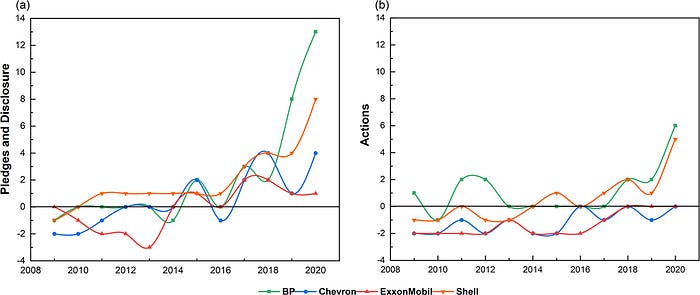
These companies are lying to us. Who saw that coming?
This unforeseeable betrayal doesn’t end here. Turns out that Oil has become so profitable for these companies that they’re walking back on their public commitments. Not just sneaking around not hitting their targets, but publicly slashing them.
This might seem surprising at first- renewable energy production is increasing (especially in developed countries), so why are fossil fuels raking it in? The answer to that is in a little-known economics phenomenon known as Price Gouging. Price gouging occurs when suppliers decide to shoot up the prices of their goods/services, typically in response to a demand/supply shock. They know that people will have no choice but to pay these higher prices, so it’s an easy way to make money. Our oil dependency is a huge contributor to the recent inflation. Oil Companies capitalized on the Ukraine-Russia War to rake in record profits-
One company, Occidental Petro Corp saw a 721.49% increase in profits in one year. Other FFCs didn’t have a bad year either.
These revenues allow oil companies to act with a certain level of impunity. They have enough money to buy themselves out of trouble and have spent decades shaping societies to be more car and oil dependent. FFCs have shaped school syllabi to brainwash kids against climate change; engaged in media suppression (including lying to the government) about oil spills; and might have even paid hackers to target nonprofits working to uncover how much information ExxonMobil hid about their knowledge of fossil fuels and their role in climate change.
For our purposes, there is one avenue to focus on. Let’s now look into lobbying, and how FFCs have utilized lobbying to push laws in their favor. However, instead of looking at lobbying from a company perspective, let’s take look at lobbying from the perspective of civil servants. Why do they cater to the whims of these companies, even at possible personal and professional risk if they get caught? The obvious answer is money. But digging deeper actually gives us an interesting lesson in economic incentives. If nothing else, understanding how companies lobby (read- legally bribe) civil servants is very interesting. While I will be using data from the USA (just because it is more available and that’s where most of my audience is), the principles/methods are global.
The Economics of Lobbying
Lobbying is an interesting subject. Even though lots of people know it happens, they don’t quite understand how it happens. Or comprehend the scale of it. Before we proceed, I’m going to ask a simple question. I want to note down the answer before you continue reading.
If you know anything about American Politics, you know that the Clintons are a huge power-couple. Both Hillary and Bill have very established political careers, spanning decades. Here’s my question to you. How much money do you think they made giving speeches (729 speeches to be exact)?
Sit with this question. Think about the number.
No scrolling ahead till you have an estimate.
Trust me, it’ll ruin the surprise.
The answer is 153 million Dollars. No that’s not a typo.
Between 2001 and 2016, the Clintons combined to make more than 153 Million USD just in paid speeches.
What kind of wisdom do you think they were dropping in their speeches?
The Clintons are far from the only ones. Politicians are often invited to give talks, sit on advisory boards, and get involved with industry groups in other ways. These lucrative positions are all perfectly legal ways for corporations to get the ear of politicians and influence policy decisions in their favor. This is why politics is one of the most lucrative careers in the world. If you’re curious, google the net worth of your favorite politician. It will surprise you.
Let’s move from personal to professional. Aside from using highly lucrative positions to get access to politicians, companies have dedicated lobbying blocks to push their agendas. In 2022, the Oil and Gas Industry spent 125,226,364 (125 Million USD) on lobbying. The biggest contributors can be seen below-
The other huge mechanism that companies use to influence politicians is campaign financing. People often overlook how expensive running a political campaign can be. When I was 14, I got to see a very hotly contested election from the front lines (I was observing the campaign of one of the contestants). I was too young to have any truly meaningful observations for you, but it is an extremely intensive endeavor (my first day, we started at 8 and ended at 2 AM). Money can swing the outcome of the election, as more money enables better campaign visibility and the capacity to drown out your opponent's narrative. FFCs are very active donors to the campaigns of various politicians-
Most talk about Lobbying ends here. However, there is another kind of lobbying that is overlooked b/c it isn’t as flashy. But it is equally effective (it might even be more so). Funding politicians is a top-down approach, that can be useful for leverage. However, this needs to be complemented with a more bottom-up, boots on the ground approach to be truly effective. Allow me to introduce you to the concept of a revolving door.
Let’s say you were a civil servant (politician, government employee, social worker etc.) working in the Oil and Gas sector. You see that you’re not as well-paid as you’d like to be. But you also don’t want to accept bribes. So, what do you do? Simple, you do your Oil Bros a solid and pass along policy/approve actions that make their lives easier. Do this for a few years and by the end you end up with an excellent job offer as a lobbyist for these FFCs. Now you get to live the good life, something your old colleagues in the public sector will see. Now they will start to follow suit, hoping to emulate your success. We have just created a culture where civil servants come in, enable policy to help corporate interests, and end up with cush jobs as lobbyists. That, my loves, is a revolving door.
This can also work in reverse. Sometimes senior corporate people can end up transitioning to the government to influence policy. A high-profile example is Jerome Powell, head of the Federal Reserve, who was formerly an investment banker. He’s not the only one. The relationship between Blackrock and the US Government is also well known-
These hires often come with expectations to ‘manage relationships’ (push favorable policy through). What a splendid example of Public-Private Partnerships!!!
While researching corporate lobbying and the revolving door, I came across several interesting conspiracy theories regarding them. I want to keep this focused on the facts, but if you’re bored, they can make for an interesting read. For now, let’s move on to the last 2 sections of this article. We will now be covering the wacky world of (faux) green solutions.
Looking at Not so Green Solutions
Remember how we talked greenwashing and how efforts taken by banks were inadequate. Time to get into that in more details-
Among the most common solutions used by companies is to rely on carbon credits. The idea is straightforward: if companies plant enough trees to suck away 1 Ton of Carbon, then they have reduced their emissions by 1 Ton. In principle, this is a great idea. However, this comes with a huge loophole. Instead of planting more trees- companies just buy plots of forests and claim that as their reforestation efforts. Often these plots of forest land are very remote and were never going to be cut down in the first place. They buy these for peanuts and continue polluting, while patting themselves for being eco-friendly. God bless corporate doublespeak.
The research into Verra, the world’s leading carbon standard for the rapidly growing $2bn (£1.6bn) voluntary offsets market, has found that, based on analysis of a significant percentage of the projects, more than 90% of their rainforest offset credits — among the most commonly used by companies — are likely to be “phantom credits” and do not represent genuine carbon reductions.
It seems like the Climate Tech/investing space is filled with such worthless ideas. Electric Cars, Monorails, and hyperloops are all touted as revolutionary ideas that will solve the climate issue. Much like FTX and Crypto, this is largely the result of VC funded Billion Dollar Hype Machines working overtime to present these as the future. Unfortunately, they face plant magnificently when introduced to reality. I don’t have the time to go into each of these in-depth, but the YouTuber AdamSomething has great videos on these topics and I highly recommend his channel here.
Another favorite of companies is using vaguely defined terms to mislead “conscious consumers”. Companies love throwing tags like ‘sustainably made’ and ‘fair trade’ and charging you higher prices. Here’s a secret- these don’t mean anything. Often these terms have no legal definitions, and companies throw these on without really changing anything. There’s a good chance you’re losing all those extra dollars without even voting with your wallet.
Unfortunately, even more established/proven solutions (turbines, solar cells, and lithium batteries) come with issues in the materials they rely on. These materials are toxic, mined through human labor exploitation, and can destroy the ecosystems around them. The following research paper is a good look at these issues and their solutions-
However, there are critical sustainability issues connected to the production of wind turbines, solar photovoltaic modules, electric vehicles and lithium-ion batteries. These include the use of conflict minerals, toxicity, and finite availability or supply chain governance risks of rare earth elements, cobalt, and lithium, that need to be taken into consideration. “Conflict minerals” refer to tantalum, tin, tungsten and gold, and their current mining is frequently linked to human rights violations and the financing of violent conflicts.
For a more human/personal look at these issues- the following article by the Guardian is a great look at how destructive lithium mining can destroy local communities and biodiversity-
In the mining installations, which occupy more than 78 sq km (30 sq miles) and are operated by multinationals SQM and Albemarle, brine is pumped to the surface and arrayed in evaporation ponds resulting in a lithium-rich concentrate; viewed from above, the pools are shades of chartreuse. The entire process uses enormous quantities of water in an already parched environment. As a result, freshwater is less accessible to the 18 indigenous Atacameño communities that live on the flat’s perimeter, and the habitats of species such as Andean flamingoes have been disrupted. This situation is exacerbated by climate breakdown-induced drought and the effects of extracting and processing copper, of which Chile is the world’s top producer. Compounding these environmental harms, the Chilean state has not always enforced indigenous people’s right to prior consent.
- The rush to ‘go electric’ comes with a hidden cost: destructive lithium mining
I don’t bring up these issues to discredit solar/wind power. On the contrary I believe that renewables will be the future (although I’m a huge believer in Nuclear Energy in the short-medium term). However, to fully leverage the potential of renewables, we can’t ignore major problems with them. We need to look at both their strengths and weaknesses, without agenda or bias and make informed decisions. Too much discourse around this issue either lionizes renewable energy or demonizes their problems. Neither is particularly helpful.
Speaking of agenda free analysis, let us look at the bastions of bias-free information- media platforms (including Social Media). What role has the media played in climate exploitation?
How the Media Profits from a Dying World
Media is considered one of the pillars of a healthy democracy. Ideally, the media serves to hold the powerful accountable and inform the regular folk about important ideas/developments. Information is power, and media helps level the playing field between the haves and have nots. That’s how it’s supposed to work. The reality is slightly different.
There are several media organizations doing great investigations/pieces on climate change (a very special shoutout to the writers of The Guardian). But the for-profit model often creates conflict of interests. Notable media organizations often have a platform for Branded Content- which is just a nice way to say fluff pieces. People can come to these platforms and pay for publicity (a trick used to gain a lot of social proof). FFCs often use these to spread their agenda. Notable media organizations have a long history of reputation-laundering for fossil fuel companies. Below is an example by the Washington Post.
These companies also must compete with Cat videos, Facebook, YouTube, Netflix, and edutainment behemoth AI Made Simple for your attention. Thus, they often rely on polarizing content, clickbait, and outrage to keep your attention. With topics as contentious as climate change and fossil fuels, this leads to muddied water and misinformation- preventing meaningful action.
It’s not only for-profit news organizations that are spreading the fossil fuel industry’s misinformation. If you listen to NPR podcasts, there’s a good chance that you’ve heard ExxonMobil touting the miraculous benefits of carbon capture, a technology that strips heat-trapping carbon dioxide molecules from smokestacks and other emissions sources. ExxonMobil’s ad, which has run on the Invisibilia, Up First, and Throughline podcasts, directs you to its website, which asserts that carbon capture technology could remove 90 percent of the greenhouse gas emissions from power plants, a claim wildly out of step with current or projected performance of the technology.
This also extends to social media. Even though all social media companies have committed to fighting climate misinformation, they are happy to take oil money to spread the agenda. The article, Climate Misinformation on Social Media Is Undermining Climate Action, has great information on this.
This creates an interesting conflict- media platforms both act as a place where essential information about climate change is shared, and where misinformation runs rampant. And unfortunately, the clickbait/sensationalized versions tend to be more attention grabbing, attracting most of the attention.
When combined with Oil Industries’ deep pockets, much of what gets propagated is noise. And unless it stops being profitable for these platforms to run the propaganda, it’s not likely that they will stop.
Throughout this article, I’ve gone over the ways different groups are contributing to climate death, for their own profit. So, what can be done about this? The first step is to educate yourself, but that is easier said than done. To prepare for this piece, I probably went over 100+ talks, articles, reports, and documents (and I have so many more left). This is not a luxury most people have. There are still so many angles I didn’t even touch in this piece: the impacts of car centric development; current agriculture practices and their influences on climate change; how society promotes overconsumption and it’s devasting effects; the ways that top 1% polluters contribute 1000x to pollution; the differing ways emissions are calculated and how that adds to problems; the negative propaganda around Nuclear Energy; how Climate Change would destroy poorer countries and groups; and much more.
All of this is overwhelming, and in a world that will fill you with sensory overload, it can be easy to check out. Tbh, I have no idea what meaningful actions we can take to deal with Climate Change. Hopefully, a climate scientist reads this and agrees to do a guest post with suggestions. Till then, here are some basic ideas I picked up through my research-
Don’t overconsume. Research the practices of where you buy from.
Lobby for Public Transportation and Mixed-Use Development. Cars are the most inefficient form of transportation, so use them as little as possible. Also push for more ecofriendly building solutions.
Consider building a DIY compost pit to dispose of all your organic waste. This reduces the amount that goes to the landfills. This is super simple, and I built a pretty great one myself. So I’d be happy to talk about it with y’all.
Reduce the energy/material utilization at your work. Also, remote work is great for the environment.
Share great resources with others.
Consider eating insects for protein. They are very sustainable as a food source (and they taste pretty good if prepared correctly). There is also some great research into using insects as animal feed/compost, which reduces the need for steroids/fertilizers.
There is a lot we could do, which can lead to decision paralysis and inaction. So just pick one or two areas that you’re most interested in and take action towards that. Some action is infinitely better than none.
If you liked this article and wish to share it, please refer to the following guidelines.
All my research/analysis is fueled by chocolate milk. If you find my work useful and would like to support my writing- please consider getting a discounted premium subscription to my publication Tech Made Simple below. Supporting gives you access to a lot more content and enables me to continue writing. You can use the button below for a special discount for readers of AI Made Simple, which will give you a premium subscription at 50% off forever. This will cost you 400 INR (5 USD) monthly or 4000 INR (50 USD) per year.
Reach out to me
Use the links below to check out my other content, learn more about tutoring, reach out to me about projects, or just to say hi.
Small Snippets about Tech, AI and Machine Learning over here
AI Newsletter- https://artificialintelligencemadesimple.substack.com/
My grandma’s favorite Tech Newsletter- https://codinginterviewsmadesimple.substack.com/
Check out my other articles on Medium. : https://rb.gy/zn1aiu
My YouTube: https://rb.gy/88iwdd
Reach out to me on LinkedIn. Let’s connect: https://rb.gy/m5ok2y
My Instagram: https://rb.gy/gmvuy9
My Twitter: https://twitter.com/Machine01776819


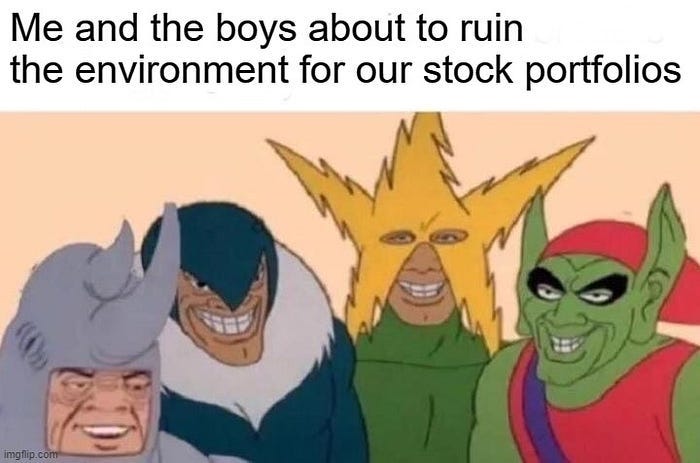
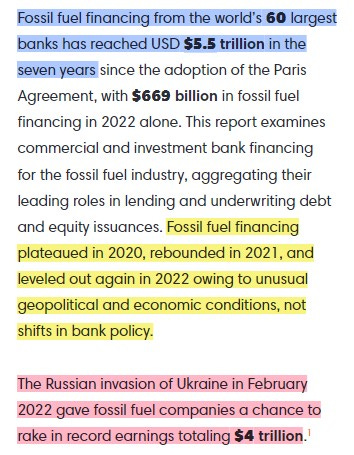






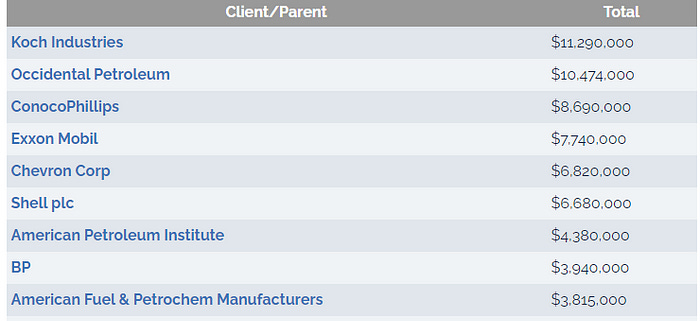
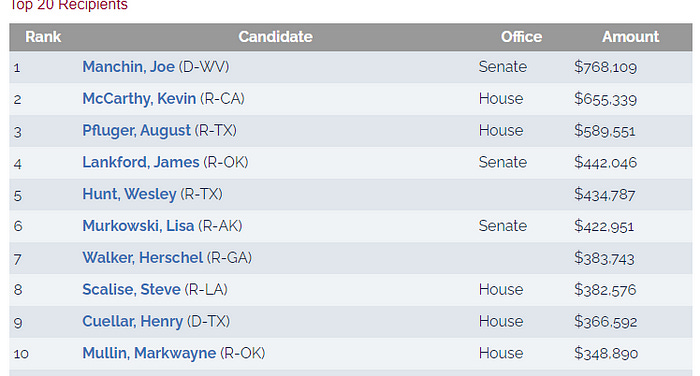
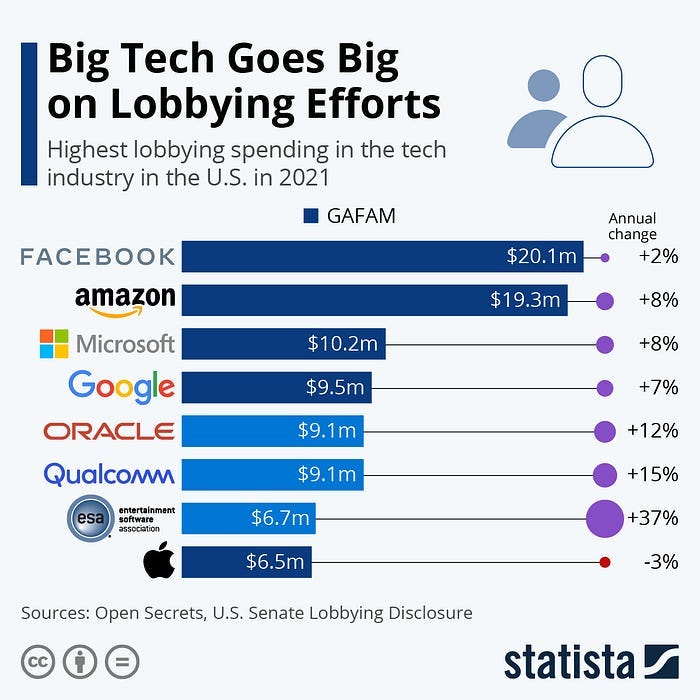




This is an interesting article but it misses a key point: Why did we pick the baselines we did?
The first baseline to consider is CO2. But CO2 is also a fertilizer for plants and literally every plant we exists because of CO2. The more CO2, the better plants grow. They actually pump CO2 into greenhouses to make everything grow faster. Also interesting to note on CO2 is that only 12% of the increase over the last 150 years can be carbon traced to Fossil Fuels. Even if we stopped ALL emissions, CO2 will increase... Why?
The second baseline is Temperature. Yet we know even less about temperature than we do CO2 and modeling temps is wicked hard. We have yet to figure out how much impact the Sun is having let alone CO2 impacts. Yet we know it's been much much warmer in the past and we also know that temperature changes have been much more dramatic in the past. So why this baseline?
I ask these two questions in the essay linked below not to challenge the science of whether the climate is changing, but to understand where we are measuring those changes from, and why. And don't worry, the essay proposes that even thinking about these questions can result in better ideas for what we need to do about it.
https://www.polymathicbeing.com/p/the-climate-is-changing
Devansh - I am sooo glad that you wrote this piece. As someone working at the intersection of AI and sustainability, and in sustainability for the last 15 years, I feel that this is not spoken about enough. None of the AI models out there talk about their environmental performance or how they plan to be climate neutral. They don’t care. But, if we have a chance to build the next wave of large scale / civilization changing infrastructure, why wouldn’t we do it correctly?
PS: did you lose subscribers writing this?